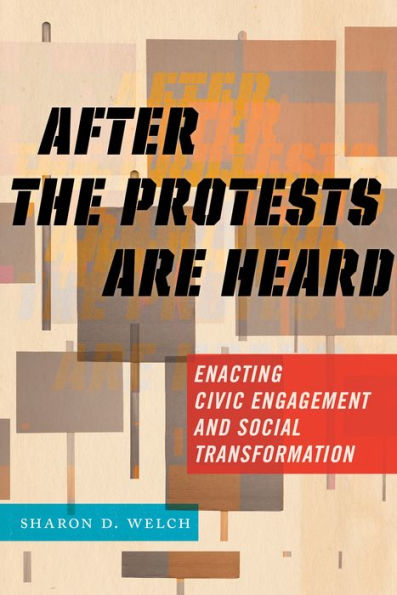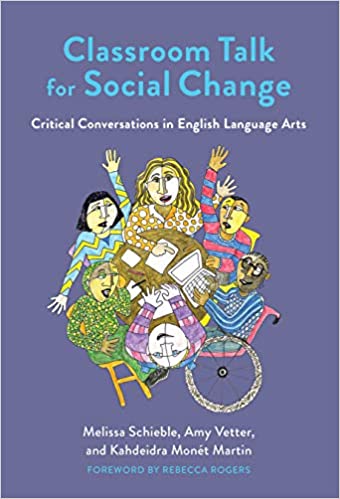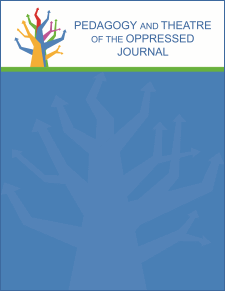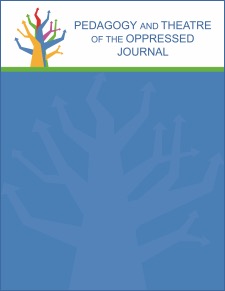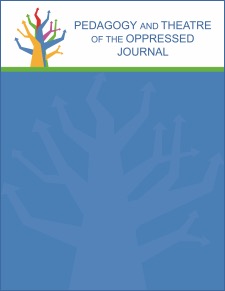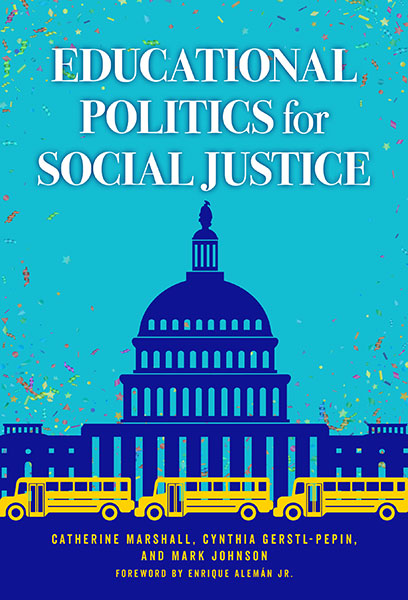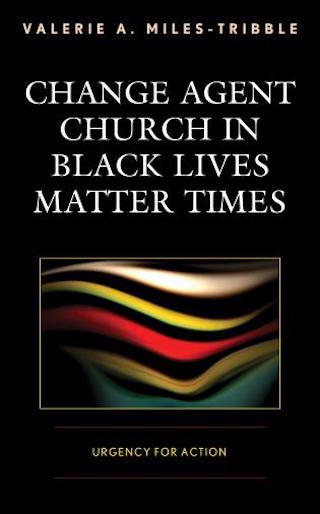Teaching for Social Justice
Scholarship On Teaching - Topic: Teaching for Social Justice - 7 results
Select an item by clicking its checkbox
Additional Info:
From the Women’s March in D.C. to #BlackLivesMatter rallies across the country, there has been a rising wave of protests and social activism. These events have been an important part of the battle to combat racism, authoritarianism, and xenophobia in Trump’s America. However, the struggle for social justice continues long after the posters and megaphones have been packed away. After the protests are heard, how can we ...
From the Women’s March in D.C. to #BlackLivesMatter rallies across the country, there has been a rising wave of protests and social activism. These events have been an important part of the battle to combat racism, authoritarianism, and xenophobia in Trump’s America. However, the struggle for social justice continues long after the posters and megaphones have been packed away. After the protests are heard, how can we ...
Additional Info:
From the Women’s March in D.C. to #BlackLivesMatter rallies across the country, there has been a rising wave of protests and social activism. These events have been an important part of the battle to combat racism, authoritarianism, and xenophobia in Trump’s America. However, the struggle for social justice continues long after the posters and megaphones have been packed away. After the protests are heard, how can we continue to work toward lasting change?
This book is an invaluable resource for anyone invested in the fight for social justice. Welch highlights examples of social justice work accomplished at the institutional level. From the worlds of social enterprise, impact investing, and sustainable business, After the Protests Are Heard describes the work being done to promote responsible business practices and healthy, cooperative communities. The book also illuminates how colleges and universities educate students to strive toward social justice on campuses across the country, such as the Engaged Scholarship movement, which fosters interactions between faculty and students and local and global communities. In each of these instances, activists work from within institutions to transform practices and structures to foster justice and equality.
After the Protests Are Heard confronts the difficult reality that social change is often followed by spikes in violence and authoritarianism. It offers important insights into how the nation might more fully acknowledge the brutal costs of racism and the historical drivers of racial injustice, and how people of all races can contain such violence in the present and prevent its resurgence in the future. For many members of the social justice community, the real work begins when the protests end. After the Protests Are Heard is a must-read for everyone interested in social justice and activism – from the barricades and campuses to the breakrooms and cubicles. (From the Publisher)
Table Of Content:
Introduction: The Soul of Democracy
1 A Declaration of Interdependence: The Science of Democracy
2 "The Lightning of Possible Storms": Theories of Social Change
3. "Go Social, Go Green": Environmentally Sound and Socially Just Economic Development
4 "Belonging, Not Belongings": An Economy of Gratitude and Reciprocity
5 Global Connections and Cultural Humility: The Science and Artistry of Community Engagement
6 Just Living: Practices of Catalytic Social Engagement
Conclusion: The Soul of Democracy
Just Living Passport: A Journey of Discovery With Lynda J Sutherland
Acknowledgments
Notes
Bibliography
Index
About the Author
From the Women’s March in D.C. to #BlackLivesMatter rallies across the country, there has been a rising wave of protests and social activism. These events have been an important part of the battle to combat racism, authoritarianism, and xenophobia in Trump’s America. However, the struggle for social justice continues long after the posters and megaphones have been packed away. After the protests are heard, how can we continue to work toward lasting change?
This book is an invaluable resource for anyone invested in the fight for social justice. Welch highlights examples of social justice work accomplished at the institutional level. From the worlds of social enterprise, impact investing, and sustainable business, After the Protests Are Heard describes the work being done to promote responsible business practices and healthy, cooperative communities. The book also illuminates how colleges and universities educate students to strive toward social justice on campuses across the country, such as the Engaged Scholarship movement, which fosters interactions between faculty and students and local and global communities. In each of these instances, activists work from within institutions to transform practices and structures to foster justice and equality.
After the Protests Are Heard confronts the difficult reality that social change is often followed by spikes in violence and authoritarianism. It offers important insights into how the nation might more fully acknowledge the brutal costs of racism and the historical drivers of racial injustice, and how people of all races can contain such violence in the present and prevent its resurgence in the future. For many members of the social justice community, the real work begins when the protests end. After the Protests Are Heard is a must-read for everyone interested in social justice and activism – from the barricades and campuses to the breakrooms and cubicles. (From the Publisher)
Table Of Content:
Introduction: The Soul of Democracy
1 A Declaration of Interdependence: The Science of Democracy
2 "The Lightning of Possible Storms": Theories of Social Change
3. "Go Social, Go Green": Environmentally Sound and Socially Just Economic Development
4 "Belonging, Not Belongings": An Economy of Gratitude and Reciprocity
5 Global Connections and Cultural Humility: The Science and Artistry of Community Engagement
6 Just Living: Practices of Catalytic Social Engagement
Conclusion: The Soul of Democracy
Just Living Passport: A Journey of Discovery With Lynda J Sutherland
Acknowledgments
Notes
Bibliography
Index
About the Author
Additional Info:
Learn how to foster critical conversations in English language arts classrooms. This guide encourages teachers to engage students in noticing and discussing harmful discourses about race, gender, and other identities. The authors take readers through a framework that includes knowledge about power, a critical learner stance, critical pedagogies, critical talk moves, and vulnerability. The text features in-depth classroom examples from six secondary English language arts classrooms. Each chapter offers specific ...
Learn how to foster critical conversations in English language arts classrooms. This guide encourages teachers to engage students in noticing and discussing harmful discourses about race, gender, and other identities. The authors take readers through a framework that includes knowledge about power, a critical learner stance, critical pedagogies, critical talk moves, and vulnerability. The text features in-depth classroom examples from six secondary English language arts classrooms. Each chapter offers specific ...
Additional Info:
Learn how to foster critical conversations in English language arts classrooms. This guide encourages teachers to engage students in noticing and discussing harmful discourses about race, gender, and other identities. The authors take readers through a framework that includes knowledge about power, a critical learner stance, critical pedagogies, critical talk moves, and vulnerability. The text features in-depth classroom examples from six secondary English language arts classrooms. Each chapter offers specific ways in which teachers can begin and sustain critical conversations with their students, including the creation of teacher inquiry groups that use transcript analysis as a learning tool. (From the Publisher)
Table Of Content:
Foreword
Acknowledgments
1. Introduction
Why Do We Need to Have Critical Conversations in Schools?
Book Overview
2. What Do Critical Conversations Look Like in Schools?
How are Critical Conversations Generative in ELA Classrooms?
Theories that Support Critical Conversations
Tensions of Critical Conversations
3. Building Knowledge About Power and Privilege: Confronting Dominant Narratives
Are All Perspectives Equally Valid?
Dominant Narratives of Gender and Sexuality
The Dominant Narrative of Individualism
Critical Conversations in Action: Intersections of Gender and Individualism
4. Engaging a Critical Learner Stance Through Racial Literacy
Practicing Critical Self-Reflection
What Is Critical Consciousness?
Engaging a Critical Learner Stance Through Racial Literacy
Strategies for Practicing a Critical Learner Stance
Try It Out: Engaging a Critical Learner Stance to Change Teaching Practice
5. Preparing Students for Critical Conversations: Creating a Critical Space
“Reading” Classroom Spaces with a Critical Lens
Establishing a Classroom Culture for Critical Conversations
Negotiating Tension and Modeling Repair
6. Making Meaning During Critical Conversations
Humanizing
Problematizing
Resistance During Critical Conversations
7. Sustaining Critical Conversations Through Critical Talk Moves
Critical Talk Moves
Critical Conversations: Carson’s Critical Talk Moves
Building Interactional Awareness about Critical Talk Moves
8. Studying Critical Conversations in Teacher Inquiry Groups Using Transcripts
What are Inquiry Groups?
What Did Teachers Say They Learned in the Inquiry Groups?
What Did Teachers Say They Learned from Analyzing Classroom Talk?
Final Thoughts
References
About the Authors
Learn how to foster critical conversations in English language arts classrooms. This guide encourages teachers to engage students in noticing and discussing harmful discourses about race, gender, and other identities. The authors take readers through a framework that includes knowledge about power, a critical learner stance, critical pedagogies, critical talk moves, and vulnerability. The text features in-depth classroom examples from six secondary English language arts classrooms. Each chapter offers specific ways in which teachers can begin and sustain critical conversations with their students, including the creation of teacher inquiry groups that use transcript analysis as a learning tool. (From the Publisher)
Table Of Content:
Foreword
Acknowledgments
1. Introduction
Why Do We Need to Have Critical Conversations in Schools?
Book Overview
2. What Do Critical Conversations Look Like in Schools?
How are Critical Conversations Generative in ELA Classrooms?
Theories that Support Critical Conversations
Tensions of Critical Conversations
3. Building Knowledge About Power and Privilege: Confronting Dominant Narratives
Are All Perspectives Equally Valid?
Dominant Narratives of Gender and Sexuality
The Dominant Narrative of Individualism
Critical Conversations in Action: Intersections of Gender and Individualism
4. Engaging a Critical Learner Stance Through Racial Literacy
Practicing Critical Self-Reflection
What Is Critical Consciousness?
Engaging a Critical Learner Stance Through Racial Literacy
Strategies for Practicing a Critical Learner Stance
Try It Out: Engaging a Critical Learner Stance to Change Teaching Practice
5. Preparing Students for Critical Conversations: Creating a Critical Space
“Reading” Classroom Spaces with a Critical Lens
Establishing a Classroom Culture for Critical Conversations
Negotiating Tension and Modeling Repair
6. Making Meaning During Critical Conversations
Humanizing
Problematizing
Resistance During Critical Conversations
7. Sustaining Critical Conversations Through Critical Talk Moves
Critical Talk Moves
Critical Conversations: Carson’s Critical Talk Moves
Building Interactional Awareness about Critical Talk Moves
8. Studying Critical Conversations in Teacher Inquiry Groups Using Transcripts
What are Inquiry Groups?
What Did Teachers Say They Learned in the Inquiry Groups?
What Did Teachers Say They Learned from Analyzing Classroom Talk?
Final Thoughts
References
About the Authors
Additional Info:
An annual open-access, peer-reviewed journal presenting research papers, literary essays, manifestos, production and book reviews, photo essays and videos, community-based voices and actions, and other hybrid projects that address popular education and liberatory theatre, produced by Pedagogy and Theatre of the Oppressed, Inc. (http://ptoweb.org/)
An annual open-access, peer-reviewed journal presenting research papers, literary essays, manifestos, production and book reviews, photo essays and videos, community-based voices and actions, and other hybrid projects that address popular education and liberatory theatre, produced by Pedagogy and Theatre of the Oppressed, Inc. (http://ptoweb.org/)
Additional Info:
An annual open-access, peer-reviewed journal presenting research papers, literary essays, manifestos, production and book reviews, photo essays and videos, community-based voices and actions, and other hybrid projects that address popular education and liberatory theatre, produced by Pedagogy and Theatre of the Oppressed, Inc. (http://ptoweb.org/)
Table Of Content:
Editor's Introduction to the 4th Issue of the PTO Journal (Mark Weinberg)
Articles
Ch 1. The Teaching of English in Lebanese Classrooms: A Critical Look at the Dominant Curricula and Practices (Nadia Bhuiyan)
Ch 2. Digital Role-Playing Games as Means for Dialogue and Change for Marginalized Teachers (Jonathan Mendels; Amit Schejter)
Ch 3. The ‘I Am…’ Experience: Social Justice Art from Process to Product (Billicia Charnelle Hines; Ras Michael Courtney)
Ch 4. Creating Talk & Texts: Taking the Classroom into the Community (Yvonne J. Montoya; Vera Coleman, Robert Fitzpatrick, Kevin Cano, Alison Gervais, KayLynn McAbee, Devon Miller, Alec Portillos,Eliana Taylor PDF Moving Forward, Living Backward, or Just Standing Still?: Newspaper Theatre, Critical Race Theory, and Commemorating the Wade-Braden Trial in Louisville, Kentucky Amy Steiger PDF Book Review of Radical Doubt: The Joker System, After Boal Ann Elizabeth Armstrong PhD PDF Review of Valeria Appel’s “The Theatre of the Oppressed for Beginners” Ola Kraszpulska
An annual open-access, peer-reviewed journal presenting research papers, literary essays, manifestos, production and book reviews, photo essays and videos, community-based voices and actions, and other hybrid projects that address popular education and liberatory theatre, produced by Pedagogy and Theatre of the Oppressed, Inc. (http://ptoweb.org/)
Table Of Content:
Editor's Introduction to the 4th Issue of the PTO Journal (Mark Weinberg)
Articles
Ch 1. The Teaching of English in Lebanese Classrooms: A Critical Look at the Dominant Curricula and Practices (Nadia Bhuiyan)
Ch 2. Digital Role-Playing Games as Means for Dialogue and Change for Marginalized Teachers (Jonathan Mendels; Amit Schejter)
Ch 3. The ‘I Am…’ Experience: Social Justice Art from Process to Product (Billicia Charnelle Hines; Ras Michael Courtney)
Ch 4. Creating Talk & Texts: Taking the Classroom into the Community (Yvonne J. Montoya; Vera Coleman, Robert Fitzpatrick, Kevin Cano, Alison Gervais, KayLynn McAbee, Devon Miller, Alec Portillos,Eliana Taylor PDF Moving Forward, Living Backward, or Just Standing Still?: Newspaper Theatre, Critical Race Theory, and Commemorating the Wade-Braden Trial in Louisville, Kentucky Amy Steiger PDF Book Review of Radical Doubt: The Joker System, After Boal Ann Elizabeth Armstrong PhD PDF Review of Valeria Appel’s “The Theatre of the Oppressed for Beginners” Ola Kraszpulska
Additional Info:
An annual open-access, peer-reviewed journal presenting research papers, literary essays, manifestos, production and book reviews, photo essays and videos, community-based voices and actions, and other hybrid projects that address popular education and liberatory theatre, produced by Pedagogy and Theatre of the Oppressed, Inc. (http://ptoweb.org/)
An annual open-access, peer-reviewed journal presenting research papers, literary essays, manifestos, production and book reviews, photo essays and videos, community-based voices and actions, and other hybrid projects that address popular education and liberatory theatre, produced by Pedagogy and Theatre of the Oppressed, Inc. (http://ptoweb.org/)
Additional Info:
An annual open-access, peer-reviewed journal presenting research papers, literary essays, manifestos, production and book reviews, photo essays and videos, community-based voices and actions, and other hybrid projects that address popular education and liberatory theatre, produced by Pedagogy and Theatre of the Oppressed, Inc. (http://ptoweb.org/)
Table Of Content:
Ch 1. Language of Liberation? A Dialogue on Image Theatre Practice (Pavla Uppal; Wolfgang Vachon)
Ch 2. Strategic Uses of Essentialism in Boal’s Forum Theatre (Cameron N. Coulter)
Ch 3. Skooz be Hat’in: My Story Navigating and Negotiating Standard American English (Lisa M. Westbrooks)
Ch 4. Integrating Affect and Advocacy: Suicide Prevention Education and Community-Based Performance (Sharon L. Green)
An annual open-access, peer-reviewed journal presenting research papers, literary essays, manifestos, production and book reviews, photo essays and videos, community-based voices and actions, and other hybrid projects that address popular education and liberatory theatre, produced by Pedagogy and Theatre of the Oppressed, Inc. (http://ptoweb.org/)
Table Of Content:
Ch 1. Language of Liberation? A Dialogue on Image Theatre Practice (Pavla Uppal; Wolfgang Vachon)
Ch 2. Strategic Uses of Essentialism in Boal’s Forum Theatre (Cameron N. Coulter)
Ch 3. Skooz be Hat’in: My Story Navigating and Negotiating Standard American English (Lisa M. Westbrooks)
Ch 4. Integrating Affect and Advocacy: Suicide Prevention Education and Community-Based Performance (Sharon L. Green)
Additional Info:
An annual open-access, peer-reviewed journal presenting research papers, literary essays, manifestos, production and book reviews, photo essays and videos, community-based voices and actions, and other hybrid projects that address popular education and liberatory theatre, produced by Pedagogy and Theatre of the Oppressed, Inc. (http://ptoweb.org/)
An annual open-access, peer-reviewed journal presenting research papers, literary essays, manifestos, production and book reviews, photo essays and videos, community-based voices and actions, and other hybrid projects that address popular education and liberatory theatre, produced by Pedagogy and Theatre of the Oppressed, Inc. (http://ptoweb.org/)
Additional Info:
An annual open-access, peer-reviewed journal presenting research papers, literary essays, manifestos, production and book reviews, photo essays and videos, community-based voices and actions, and other hybrid projects that address popular education and liberatory theatre, produced by Pedagogy and Theatre of the Oppressed, Inc. (http://ptoweb.org/)
Table Of Content:
Ch 1. Setting the Stage for Black Choice: Theatre of the Oppressed as Container for Resistance, Black Joy (Quenna L. Barrett)
Ch 2. “I’m Not Talking to You” “You Don’t Have to!” Trans/scripting the Bland-Encinia Case (Melisa Cahnmann-Taylor)
Ch 3. Prison Is Not…But It Can Be… (Keoni K. Watson)
Ch 4. Poetry Slammin’ in the Slammer: Questioning the Limits of Arts-in-Corrections (Rivka Rocchio)
Ch 5. Social Movement Literacy: A Conceptual Overview (Jason Del Gandio)
Ch 6. “On Your Feet!”: Addressing Ableism in Theatre of the Oppressed Facilitation (Caitlin E. Ray)
Ch 7. The Medical Student Manifesto (Ye Kyung Song)
An annual open-access, peer-reviewed journal presenting research papers, literary essays, manifestos, production and book reviews, photo essays and videos, community-based voices and actions, and other hybrid projects that address popular education and liberatory theatre, produced by Pedagogy and Theatre of the Oppressed, Inc. (http://ptoweb.org/)
Table Of Content:
Ch 1. Setting the Stage for Black Choice: Theatre of the Oppressed as Container for Resistance, Black Joy (Quenna L. Barrett)
Ch 2. “I’m Not Talking to You” “You Don’t Have to!” Trans/scripting the Bland-Encinia Case (Melisa Cahnmann-Taylor)
Ch 3. Prison Is Not…But It Can Be… (Keoni K. Watson)
Ch 4. Poetry Slammin’ in the Slammer: Questioning the Limits of Arts-in-Corrections (Rivka Rocchio)
Ch 5. Social Movement Literacy: A Conceptual Overview (Jason Del Gandio)
Ch 6. “On Your Feet!”: Addressing Ableism in Theatre of the Oppressed Facilitation (Caitlin E. Ray)
Ch 7. The Medical Student Manifesto (Ye Kyung Song)
Additional Info:
Employing a social justice framework, this book provides educational leaders and practitioners with tools and strategies for grappling with the political fray of education politics. The framework offers ways to critique, challenge, and alter social, cultural, and political patterns in organizations and systems that perpetuate inequities. The authors focus on the processes through which educational politics is enacted, illustrating how inequitable power relations are embedded in our democratic systems. Readers ...
Employing a social justice framework, this book provides educational leaders and practitioners with tools and strategies for grappling with the political fray of education politics. The framework offers ways to critique, challenge, and alter social, cultural, and political patterns in organizations and systems that perpetuate inequities. The authors focus on the processes through which educational politics is enacted, illustrating how inequitable power relations are embedded in our democratic systems. Readers ...
Additional Info:
Employing a social justice framework, this book provides educational leaders and practitioners with tools and strategies for grappling with the political fray of education politics. The framework offers ways to critique, challenge, and alter social, cultural, and political patterns in organizations and systems that perpetuate inequities. The authors focus on the processes through which educational politics is enacted, illustrating how inequitable power relations are embedded in our democratic systems. Readers will explore education politics at five focal points of power (micro, local/district, state, federal, and global). The text provides examples of how to “work the system” in ways that move toward greater justice and equity in schools. (From the Publisher)
Table Of Content:
Foreword Enrique Aleman
Preface
Part I: Centering Justice in Educational Politics
1. Power, Democracy, and Social Justice Values
Introduction
Centering Justice: A Framework for Action
Power Dynamics and Control in Framing Policy
Who Defines Policy Problems?
Centering Justice: Valuing Democracy and Justice
Strategic Democratic Possibilities
Democratizing Politics and Centering Justice
A Centering Justice Oriented Analysis: An Example
Summary
Part ii: Multiple Arenas of Educational Politics
2. Micropolitics: “Hidden” Conflicts and Power
Introduction
Structural Power Dynamics
Sociocultural Power Dynamics
The Power of Micropolitics for Centering Justice
Centering Justice: A Curriculum with Two Kings
Summary
3. Democracy and Community in Districts?
Introduction
The Players on School Boards and in the Central Office
Ways to Look at District Politics and Policy
Expanding Agendas to Center Justice
Summary
4. State Policy Shifts and Cultural Idiosyncrasies
Introduction
Shifts in the Role of State Education Policy
Key State Policymakers, Arenas of Power, and Concepts of Analysis
Summary
5. Federal Policy Communities and Interest Groups
Introduction
Centering Justice: The Opt-Out Movement
Summary
6. Global Education Politics
Introduction
Actors, Arenas, and Structures for International Politics
Cross-National Comparisons of Education
Social Justice Approaches to the Comparative Education Policy
Relevant Questions for International Comparisons
Differing Contexts and Values Across Countries
International Sharing and Borrowing
Continuing Challenges and Controversies
Questions from Centering Justice Framing
Global Framing of Policy Discourse
Politics for Social Justice: Thinking Globally
Centering Justice: Greta Thunberg and “School Strikes for the Climate”
Summary
Part iii: Making Connections for Policy Action
7. Policy Webs, Pendulum Shifts, and Interconnections
Introduction
The Policy Web of Leadership
Pendulum Swings of Webs of Control, Values, and Priorities
The Paradox of Policy Intent and Unintended Consequences
The Paradox of Ignoring Race and Culture: The Immigrant Experience
Interweaving of National and International Politics
Unanticipated Consequences and Hidden Goals
Cross-Purposes, Stupidity, and Contradictions
Interrelationship Among Organizations and Interest Groups
Making Connections: Family-Centered Integrated Service
Systems and Schools
Centering Justice: Designing a School Around Caring
Relationships
Summary
8. Leading for Justice and Equity
Introduction
Exposing Inequitable Power and Injustice
Engaging Political Arenas
Centering Justice: Can a Superintendent Take a Stand?
Alternative Approaches for Leadership
Centering Justice in Educational Politics
Specific Tools for Centering Social Justice Leadership
Examine Advocacy Strategies
Summary
References
Index
About the Authors
Employing a social justice framework, this book provides educational leaders and practitioners with tools and strategies for grappling with the political fray of education politics. The framework offers ways to critique, challenge, and alter social, cultural, and political patterns in organizations and systems that perpetuate inequities. The authors focus on the processes through which educational politics is enacted, illustrating how inequitable power relations are embedded in our democratic systems. Readers will explore education politics at five focal points of power (micro, local/district, state, federal, and global). The text provides examples of how to “work the system” in ways that move toward greater justice and equity in schools. (From the Publisher)
Table Of Content:
Foreword Enrique Aleman
Preface
Part I: Centering Justice in Educational Politics
1. Power, Democracy, and Social Justice Values
Introduction
Centering Justice: A Framework for Action
Power Dynamics and Control in Framing Policy
Who Defines Policy Problems?
Centering Justice: Valuing Democracy and Justice
Strategic Democratic Possibilities
Democratizing Politics and Centering Justice
A Centering Justice Oriented Analysis: An Example
Summary
Part ii: Multiple Arenas of Educational Politics
2. Micropolitics: “Hidden” Conflicts and Power
Introduction
Structural Power Dynamics
Sociocultural Power Dynamics
The Power of Micropolitics for Centering Justice
Centering Justice: A Curriculum with Two Kings
Summary
3. Democracy and Community in Districts?
Introduction
The Players on School Boards and in the Central Office
Ways to Look at District Politics and Policy
Expanding Agendas to Center Justice
Summary
4. State Policy Shifts and Cultural Idiosyncrasies
Introduction
Shifts in the Role of State Education Policy
Key State Policymakers, Arenas of Power, and Concepts of Analysis
Summary
5. Federal Policy Communities and Interest Groups
Introduction
Centering Justice: The Opt-Out Movement
Summary
6. Global Education Politics
Introduction
Actors, Arenas, and Structures for International Politics
Cross-National Comparisons of Education
Social Justice Approaches to the Comparative Education Policy
Relevant Questions for International Comparisons
Differing Contexts and Values Across Countries
International Sharing and Borrowing
Continuing Challenges and Controversies
Questions from Centering Justice Framing
Global Framing of Policy Discourse
Politics for Social Justice: Thinking Globally
Centering Justice: Greta Thunberg and “School Strikes for the Climate”
Summary
Part iii: Making Connections for Policy Action
7. Policy Webs, Pendulum Shifts, and Interconnections
Introduction
The Policy Web of Leadership
Pendulum Swings of Webs of Control, Values, and Priorities
The Paradox of Policy Intent and Unintended Consequences
The Paradox of Ignoring Race and Culture: The Immigrant Experience
Interweaving of National and International Politics
Unanticipated Consequences and Hidden Goals
Cross-Purposes, Stupidity, and Contradictions
Interrelationship Among Organizations and Interest Groups
Making Connections: Family-Centered Integrated Service
Systems and Schools
Centering Justice: Designing a School Around Caring
Relationships
Summary
8. Leading for Justice and Equity
Introduction
Exposing Inequitable Power and Injustice
Engaging Political Arenas
Centering Justice: Can a Superintendent Take a Stand?
Alternative Approaches for Leadership
Centering Justice in Educational Politics
Specific Tools for Centering Social Justice Leadership
Examine Advocacy Strategies
Summary
References
Index
About the Authors
Additional Info:
Volatile social dissonance in America’s urban landscape is the backdrop as Valerie A. Miles-Tribble examines tensions in ecclesiology and public theology, focusing on theoethical dilemmas that complicate churches’ public justice witness as prophetic change agents. She attributes churches’ reticence to confront unjust disparities to conflicting views, for example, of Black Lives Matter protests as “mere politics,” and disparities in leader and congregant preparation for public justice roles. As a ...
Volatile social dissonance in America’s urban landscape is the backdrop as Valerie A. Miles-Tribble examines tensions in ecclesiology and public theology, focusing on theoethical dilemmas that complicate churches’ public justice witness as prophetic change agents. She attributes churches’ reticence to confront unjust disparities to conflicting views, for example, of Black Lives Matter protests as “mere politics,” and disparities in leader and congregant preparation for public justice roles. As a ...
Additional Info:
Volatile social dissonance in America’s urban landscape is the backdrop as Valerie A. Miles-Tribble examines tensions in ecclesiology and public theology, focusing on theoethical dilemmas that complicate churches’ public justice witness as prophetic change agents. She attributes churches’ reticence to confront unjust disparities to conflicting views, for example, of Black Lives Matter protests as “mere politics,” and disparities in leader and congregant preparation for public justice roles. As a practical theologian with experience in organizational leadership, Miles-Tribble applies adaptive change theory, public justice theory, and a womanist communitarian perspective, engaging Emilie Townes’s construct of cultural evil as she presents a model of social reform activism re-envisioned as public discipleship. She contends that urban churches are urgently needed to embrace active prophetic roles and thus increase public justice witness. “Black Lives Matter times” compel churches to connect faith with public roles as spiritual catalysts of change. (From the Publisher)
Table Of Content:
Introduction: Where’s the Church?
Part 1: Societal Perspectives
1. Black Lives Matter Times: Why the Church as Change Agent?
2. Toxic Silence: Rogue Practices, Double Standards, and Lemming Behavior
3. Can Dry Bones Live? Societal Challenges to Solidarity and Survival
Part 2: Theoethical Perspectives
4. Weary Hope: Restorative Ethics in the Praxis of Social Reform Activism
5. God Sees: Engaging a Womanist Theoethical Hermeneutic
Part 3: Contextual Perspectives
6. Doing the Work: Adaptive Methods for Contextual Praxis
7. On the Road to Oz: Urgency for Prophetic Social Change
Volatile social dissonance in America’s urban landscape is the backdrop as Valerie A. Miles-Tribble examines tensions in ecclesiology and public theology, focusing on theoethical dilemmas that complicate churches’ public justice witness as prophetic change agents. She attributes churches’ reticence to confront unjust disparities to conflicting views, for example, of Black Lives Matter protests as “mere politics,” and disparities in leader and congregant preparation for public justice roles. As a practical theologian with experience in organizational leadership, Miles-Tribble applies adaptive change theory, public justice theory, and a womanist communitarian perspective, engaging Emilie Townes’s construct of cultural evil as she presents a model of social reform activism re-envisioned as public discipleship. She contends that urban churches are urgently needed to embrace active prophetic roles and thus increase public justice witness. “Black Lives Matter times” compel churches to connect faith with public roles as spiritual catalysts of change. (From the Publisher)
Table Of Content:
Introduction: Where’s the Church?
Part 1: Societal Perspectives
1. Black Lives Matter Times: Why the Church as Change Agent?
2. Toxic Silence: Rogue Practices, Double Standards, and Lemming Behavior
3. Can Dry Bones Live? Societal Challenges to Solidarity and Survival
Part 2: Theoethical Perspectives
4. Weary Hope: Restorative Ethics in the Praxis of Social Reform Activism
5. God Sees: Engaging a Womanist Theoethical Hermeneutic
Part 3: Contextual Perspectives
6. Doing the Work: Adaptive Methods for Contextual Praxis
7. On the Road to Oz: Urgency for Prophetic Social Change


